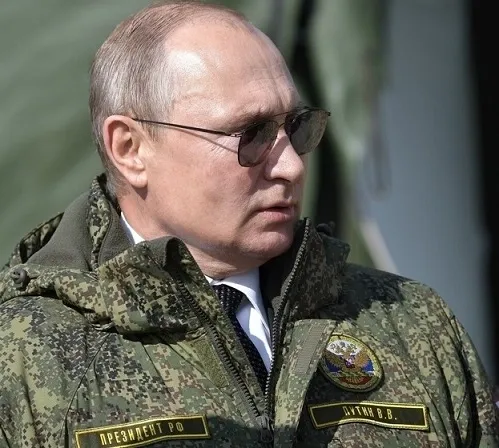
Putin’s on the brink
by Herman Pirchner*
In Vietnam, Afghanistan and many other conflicts, the stronger power lost because it could not win, and the weaker power triumphed simply because it did not lose. So shall it be in Ukraine, where the same process is playing out rapidly.
In less than six months, Russian President Vladimir Putin’s war of choice has had catastrophic consequences — for Russia itself. It has resulted in at least 60,000 Russian casualties, more than the total number of fatalities suffered during the 10-year Soviet occupation of Afghanistan. It has led to a long-term Russian loss of political influence and energy leverage in the West. It has helped resuscitate the NATO alliance, which just a few years ago seemed to be on its last legs. And it has inflicted severe, long-term damage on the Russian economy, effectively erasing all of the gains made since the Soviet Union’s collapse.
And what has Russia gotten for this? Only a few more slivers of land in Ukraine — land that the Kremlin may not be able to hold for very long.
Russia’s elites already know this. As the body bags, wounded and discharged soldiers return to Russia, the Russian people are beginning to comprehend it as well. All of which increases Putin’s domestic political vulnerability — and puts him under growing pressure to find some way to declare victory.
As a result, Russia’s president has continued to double down on his campaign of aggression. Following its failure to take Kyiv, Kharkiv and other Ukrainian territories, the Kremlin retooled its strategic objectives, narrowing them to the more limited aim of fully conquering the Ukrainian provinces of Donetsk and Luhansk, both of which had been partially occupied since 2014. At great human cost, some gains have been made toward that goal. Overall, however, Russia’s revamped offensive can be classified as a strategic failure, as more and more Russians die to temporarily hold non-strategic territory.
This failure, in turn, has caused other problems. The troops used for cannon fodder in the Kremlin’s campaign have been disproportionally not ethnically Russian — something that has caused a souring of troop morale and stoked tensions between ethnically Russian troops and those from places like Buryatia (traditionally Buddhist) and Dagestan (mostly Muslim). Some soldiers are now refusing to fight, and discontent among their families presents a growing problem for Russia’s government.
But what is perhaps Putin’s most dangerous “bad bet” is now unfolding. With the destruction of the bridges necessary to resupply and/or reinforce them, the estimated 20,000 Russian troops on the west bank of the Dnipro River are trapped, effectively surrounded by Ukrainian forces without the capability to break out or to fight for any extended period of time. Putin did not reposition these troops when he had the chance to do so, effectively leaving them stranded. As a result, some senior commanders have deserted across the river, damaging Russian troop morale in Kherson and elsewhere.
All this makes Putin’s internal situation worse, as more and more members of Russia’s power ministries focus on his ongoing — and disastrous — mistakes. Eventually, a critical mass of Russia’s decision-making elites (those with guns or money) will conclude that the country needs to cut its losses by withdrawing its forces from Ukraine, because doing so would be a precondition for the removal of Western sanctions and allowing Russia to rebuild its army and economy.
This, however, cannot be done with Putin still in power.
Although removing Russia’s president from power won’t be easy, eventually the balance will inexorably shift from the dwindling number of stalwarts who still support his war aims to those who want to cut their losses.
That point could well come if the stalemate in the Donbas continues, and Ukraine starts to recapture territory now occupied by Russia. Today, both of those outcomes are distinctly possible. As a result, so too is a possible end to the current war.
*Herman Pirchner, Jr. is president of the American Foreign Policy Council in Washington, D.C.
Source: The Hill
